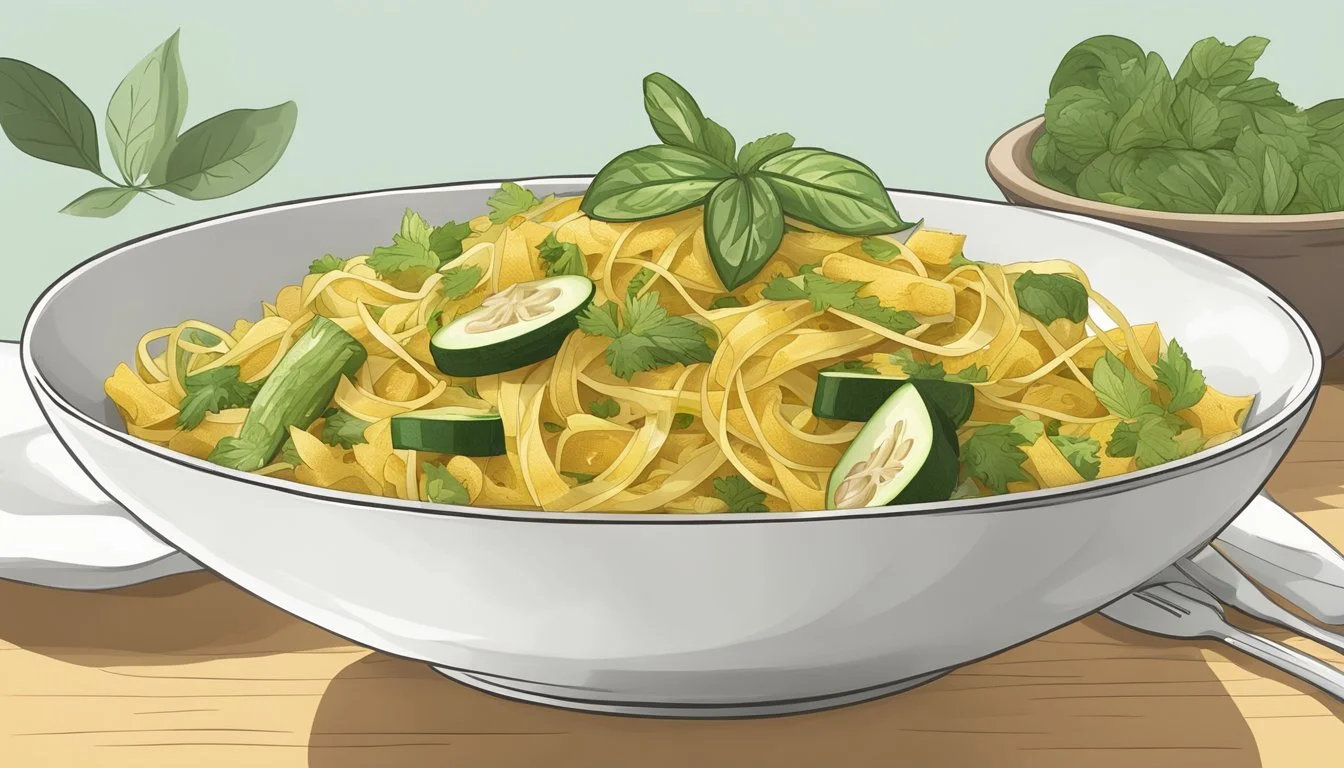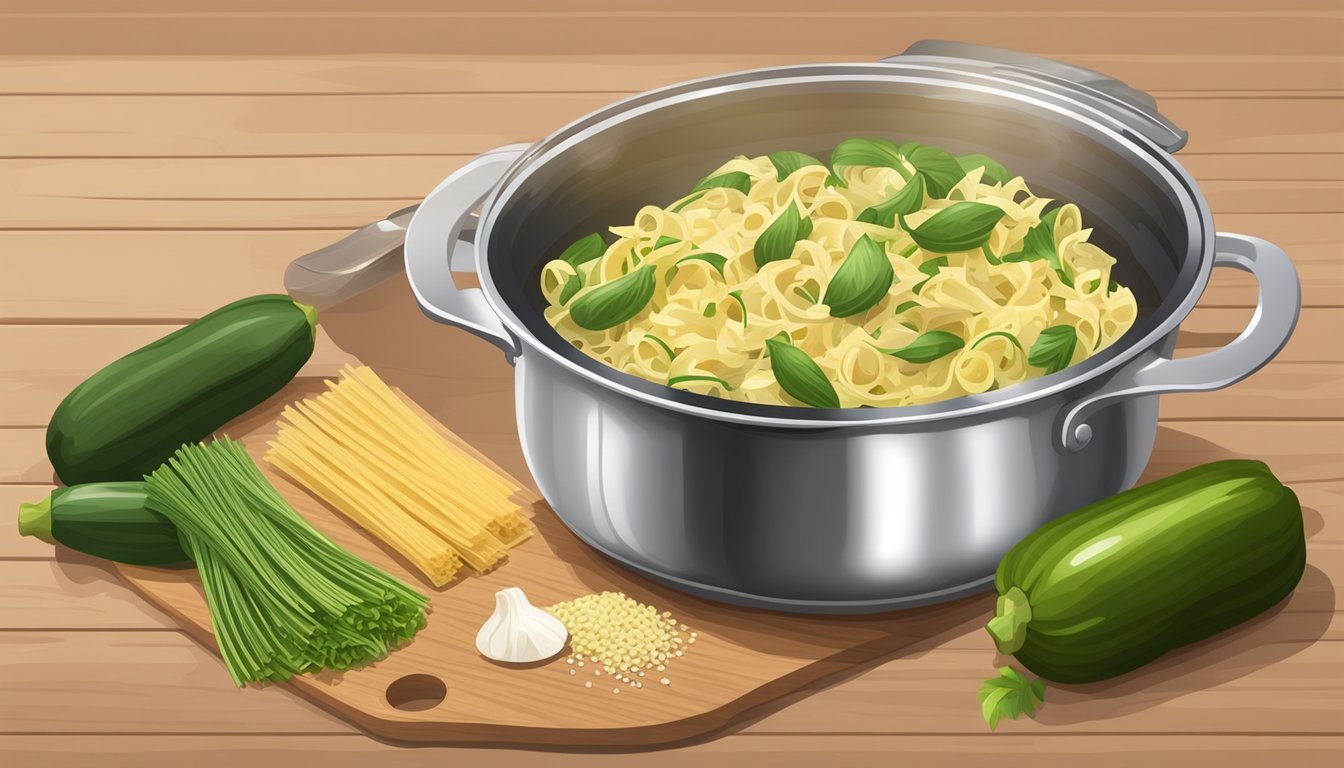Farfalle Pasta Substitutes
Top Alternatives for Your Favorite Bow-Tie Noodles
Farfalle pasta, with its distinctive bowtie shape, is a versatile ingredient cherished by both home cooks and professional chefs for its ability to pair beautifully with a variety of sauces and ingredients. When this particular pasta (What wine goes well with pasta?) is not available, or when someone is looking to experiment with new textures and flavors, there are several suitable substitutes that can take its place in almost any recipe. The goal is to choose an alternative that complements the dish's components while maintaining the integrity of the original recipe.
The best replacements are those that mimic farfalle's bite-sized form and ability to hold onto sauces. Pasta shapes like fusilli, conchiglie, and orecchiette are excellent alternatives because they offer similar surfaces for sauces to cling to, ensuring that each bite is as flavorful as with farfalle. These shapes are readily available and can be used in an array of dishes, from cold pasta salads to heartwarming baked pastas.
Understanding the pairing of pasta shapes with sauces can further refine one's culinary choices. For instance, thicker sauces might fare better with wider pastas such as rigatoni or penne, which can stand up to robust flavors and hearty ingredients. On the other hand, lighter sauces, which are often served with farfalle, can be better suited to long and thin pasta like spaghetti or linguine. The principle lies in the interaction of pasta surface area and sauce consistency which is crucial to achieving the desired texture and flavor in a dish.
Understanding Farfalle Pasta
Farfalle pasta, widely recognized for its distinctive shape, is a staple in Italian cuisine. This pasta resembles a butterfly or a bow tie, which is not merely ornamental but practical in function. Originating from Italy, namely the regions of Lombardia and Emilia-Romagna, farfalle dates back to the 16th century.
Typical Ingredients:
Primary ingredient: Semolina from durum wheat
Water: For dough formation
Shape and Texture:
Unique Shape: The pasta is pinched in the middle to form the characteristic bow tie or butterfly shape.
Texture: Often smooth, which can affect sauce adherence.
Farfalle is versatile and commonly paired with a variety of sauces, from light, cream-based concoctions to richer, tomato-based recipes. The surface area and ridges of pasta play a critical role in sauce interaction. For example, farfalle's relatively smooth texture allows lighter sauces to cling while not as ideal for heavier, chunkier sauces.
This pasta's popularity extends beyond Italy, gracing tables and enriching meals across the globe. The consistency of farfalle is largely owed to its foundation of high-quality semolina, lending it a desirable al dente texture when properly cooked. Its unique shape isn't just for show; it offers a playful aesthetic and practical design that is beloved in many pasta dishes (What wine goes well with pasta dishes?), making it a testament to the ingenuity and tradition of Italian pasta-making.
Ideal Substitutes for Farfalle Pasta
Farfalle pasta, known for its "bow-tie" shape, is popular in a variety of dishes. When it's unavailable, several alternatives offer the similar size, texture, and ability to pair with sauces and ingredients.
Similar Shape and Texture
Fusilli and rotini are excellent alternatives with their spiral shapes, which provide a comparable texture to farfalle.
Orecchiette, which means "little ears," can also mimic the pleated design of farfalle, catching sauces similarly.
For Pasta Salads
Conchiglie (shells) and penne are a good fit for cold salads due to their shapes which easily scoop up light dressings and small vegetables like peas and diced cucumber.
Rotini is another choice that complements the refreshing crunch of vegetables like broccoli and bell peppers in pasta salads.
In Hot Dishes
Cavatappi and rigatoni, with their tubular shapes, are suitable for hot dishes where the pasta needs to hold onto heavy cream or tomato-based sauces.
Penne works well with chunky, thick sauces, such as alfredo or a hearty meat-based sauce.
Gluten-Free Options
Rice or corn pasta in shapes like fusilli or penne provide gluten-free alternatives without sacrificing texture.
Look for labels indicating the product is made without semolina flour and is specifically designed to be gluten-free.
Cultural Alternatives
Traditional pastas from southern Italy such as orecchiette and ones from northern regions like Lombardia, such as fusilli bucati, offer a taste of Italian cuisine diversity.
Emilia-Romagna’s heartier pasta dishes might favor fusilli for its ability to hold rich, creamy sauces.
Considering Texture and Flavor
Rigatoni with its ridges is ideal for locking in flavor and pairs well with savory elements like caramelized onions and mushrooms.
Smaller pasta shapes might be favored for their quicker cook time and subtle flavor which can complement rather than compete with delicate sauces.
Alternative Ingredients in Farfalle Recipes
Swap in whole wheat pasta varieties of similar shapes for an earthier flavor and added nutritional benefits.
In recipes that call for farfalle with vegetables like spinach or olives, consider using conchiglie to trap the flavors.
Substitutes Based on Dish Type
Penne and macaroni are versatile and can be used in a variety of preparations from baked ziti to pasta salads.
Fusilli is particularly suitable for dishes with pesto or marina sauce, thanks to its ability to
How to Choose the Right Substitute
When selecting an alternative for farfalle pasta, one must consider the purpose of substitution. Whether it is due to dietary restrictions, availability, or simply a desire for variation, the substitute should closely match the texture and cooking behavior of farfalle.
For similar cooking instructions and versatility, ingredients such as durum wheat or semolina are key as they provide a firm texture after cooking, akin to farfalle. Ideally, the chosen pasta should also be capable of holding onto sauces and accompaniments as expertly as farfalle's characteristic shapes.
Below is a guide to assist in making the right selection:
Substitute Texture Best Used With Penne Tube-shaped, firm Tomato-based, creamy sauces Orecchiette Bowl-shaped Vegetable-based sauces Shells Concave Light sauces and broths Mini Penne Small tube-shaped Cheesy sauces, baked dishes
Consider flavor compatibility with sauces and recipe profiles. For rich, meaty sauces, alternatives like pappardelle provide adequate surface area to marry well with heavier ingredients.
The texture of the substitute plays a critical role; one needs a pasta that doesn't become mushy or fall apart during cooking. A choice such as mezzi rigatoni holds al dente well and suits hearty recipes traditionally served with farfalle.
Lastly, think about the ingredients' dietary aspects. If gluten is a concern, options like brown rice or quinoa-based pasta can offer similar versatility, cooking requirements, and a robust texture.
Selecting the right substitute thus depends on balancing these factors to best suit one's specific cooking needs and taste preferences.
Cooking Tips for Substitute Pasta
When choosing a substitute for farfalle pasta, it's essential to consider variations in cooking times, how well different pasta shapes hold sauces, and the overall texture to maintain the integrity of the dish.
Adjusting the Cooking Time
Different pasta shapes have varying densities and thicknesses, necessitating adjustments to cooking times. For instance, if one opts for penne—a popular farfalle alternative— they should be mindful of its tubular structure and firmer dough, often requiring a longer cook time to reach al dente. It's crucial to adhere to the instructions on the package but begin checking for doneness a few minutes before the stated time to avoid overcooking.
Substitute Pasta Approximate Cook Time Penne 11-13 minutes Orecchiette 9-12 minutes Rotini 8-10 minutes
Sauce Pairing
Substitutes for farfalle should be chosen not only based on their cook time but also their ability to hold sauces. Shapes with grooves or ridges, such as rotini, create an ideal surface for sauces to cling to, enhancing flavor with every bite. Alternatively, larger pockets, similar to those in orecchiette, are excellent for trapping thicker sauces, making every forkful rich and satisfying.
Ridged Pastas: Ideal for lighter, oil-based sauces or tomato sauces.
Pasta with Pockets: Best with hearty, chunky sauces like meat ragù.
Maintaining Pasta Integrity
The key to maintaining the integrity of substitute pasta is to select a type made from quality dough, typically comprised of semolina flour, which provides a robust texture. Cooking pasta to al dente ensures that it remains firm to the bite and doesn't disintegrate when mixed with sauces or other ingredients. Stirring the pasta occasionally while it cooks can prevent sticking and help it cook evenly.
Tips for Al Dente Pasta:
Stir occasionally to ensure even cooking.
Test firmness a few minutes before the lower end of the recommended cooking range.
Drain immediately to stop the cooking process and prevent softening.
Children-Friendly Pasta Alternatives
When it comes to pleasing young palates, pasta is a surefire hit. However, if farfalle—a bowtie-shaped pasta that's fun for kids to eat—isn't on hand, there are plenty of child-friendly substitutes to consider. Simplicity, shape, and texture are key when selecting an alternative that's both easy to eat and engaging for kids.
Penne: Small tube-shaped pasta pieces are easy for little hands to grip. Their ridges hold onto sauces well, making each bite flavorful.
Orecchiette: Also known as "little ears" due to their shape, these are perfect for scooping up thicker sauces and small veggies.
Conchiglie: Resembling small shells, they're not only attractive for children but also serve as tiny cups to capture sauces and cheese.
For an added twist, parents can opt for pasta made with whole grains or vegetables, adding a nutritional boost to a kid-favorite dish. Here's a simple breakdown for reference:
Pasta Type Description Kids' Appeal Penne Tube-shaped, ridged Easy to hold; catches sauce well Orecchiette Small, ear-shaped Fun shape; great for scooping sauces Conchiglie Shell-shaped Captures small ingredients; visually engaging for children
Parents should ensure that the pasta is cooked to a softer texture to make chewing and digestion easy for children. With these alternatives, kids can enjoy a variety of shapes and textures while parents can rest assured that their meal is both delightful and suitable for little eaters.





